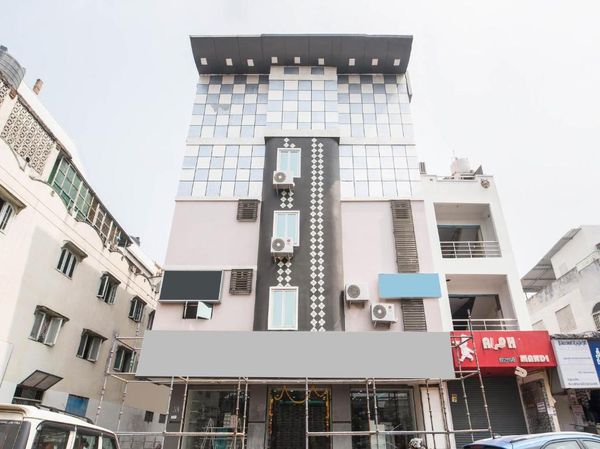Beyond the Trigger: A Deep Dive into Paint Sprayer Parts and Functions
 Touch Stonewrap
27 May, 2024
9 mins read
286
Touch Stonewrap
27 May, 2024
9 mins read
286

When it comes to painting, the tool that often gets overlooked is the paint sprayer. While most people are familiar with traditional methods of painting such as using a brush or roller, paint sprayers offer a more efficient and precise way to apply paint.
However, to fully utilize the benefits of a paint sprayer, one must have a good understanding of its parts and functions. In this deep dive, we will explore the various components that make up a paint sprayer and how they work together to provide a smooth and flawless finish.
The Trigger
The trigger is the most recognizable part of a paint sprayer as it is the component that you press to release the paint. However, there is more to the trigger than just a simple press-and-release mechanism.
The trigger is responsible for controlling the flow of paint, which determines the amount of paint being sprayed onto the surface. This control allows for precision and accuracy when painting, making it easier to achieve desired results.
The Motor
The motor is the powerhouse of a paint sprayer as it provides the necessary power to pump and push the paint through the sprayer. The motor can either be electric or gas-powered, with each having its benefits.
Electric motors are more common and easier to use, while gas-powered motors offer more power and portability. The motor's horsepower also plays a crucial role in determining the spray pattern and coverage of the paint.
The Pump
The pump is responsible for pulling the paint from the container and pushing it through the sprayer. It works hand in hand with the motor to ensure a steady flow of paint. There are two types of pumps commonly used in paint sprayers: diaphragm and piston pumps.
Diaphragm pumps are more suitable for thinner materials, while piston pumps can handle thicker paints such as latex.
The Nozzle
The nozzle is the part of the paint sprayer that determines the spray pattern and direction. Most nozzles have an adjustable tip, allowing for various spray patterns such as horizontal, vertical, and circular.
The size of the nozzle also plays a significant role in determining the coverage area of the paint. A larger nozzle will cover more surface area but may result in a thicker coat of paint, while a smaller nozzle will provide more precision but with less coverage.
The Hose
The hose is the component that connects the pump to the sprayer gun. It is responsible for carrying the paint from the container to the gun and plays an essential role in maintaining a steady flow of paint.
A longer hose allows for more flexibility and mobility when using a paint sprayer, while a shorter hose may limit movement and require frequent repositioning of the paint container.
The Gun
The gun is where all the magic happens. It is responsible for releasing the paint in a pressurized form onto the surface being painted. The gun's trigger, when pressed, releases compressed air that pushes the paint through the nozzle, resulting in a fine mist of paint.
The gun's design also plays a significant role in controlling overspray and ensuring an even distribution of paint.
Filters
Filters are often overlooked but play a crucial role in the performance of a paint sprayer. They prevent debris, such as dirt or dried paint particles, from clogging the nozzle and causing uneven spray patterns. Filters should be regularly checked and replaced to ensure a smooth and consistent flow of paint.
The Container
The container, also known as the hopper or cup, holds the paint that will be sprayed. Most paint sprayers come in different sizes of containers, allowing for versatility in the amount of paint being used. A larger container is ideal for bigger projects, while a smaller one is suitable for touch-ups and small areas.
The Air Compressor
While not all paint sprayers require an air compressor, some rely on it to provide the necessary pressure to push the paint through the nozzle. An air compressor is an added component that must be properly maintained and matched with the specific paint sprayer being used.
FAQ
- What is the difference between an electric and gas-powered motor in a paint sprayer?
Electric motors are easier to use, while gas-powered motors offer more power and portability.
- Can I adjust the spray pattern of a paint sprayer?
Most nozzles have adjustable tips that allow for different spray patterns such as horizontal, vertical, and circular.
- How often should I replace the filters in my paint sprayer?
Filters should be regularly checked and replaced to ensure a smooth and consistent flow of paint. The frequency will depend on how frequently the sprayer is used and the type of paint being used.
Conclusion
A paint sprayer may seem like a complicated tool, but understanding titan sprayer parts and functions can make a significant difference in achieving a professional-looking finish. From the trigger to the air compressor, each component plays an essential role in providing a smooth and efficient painting experience.
By knowing how these parts work together, one can make full use of a paint sprayer's benefits and take their painting skills to the next level. flex sprayer and paint sprayer parts are different beasts, even though they both deal with applying liquids.
Written By:
Touch Stonewrap



Hotels at your convenience
Now choose your stay according to your preference. From finding a place for your dream destination or a mere weekend getaway to business accommodations or brief stay, we have got you covered. Explore hotels as per your mood.





